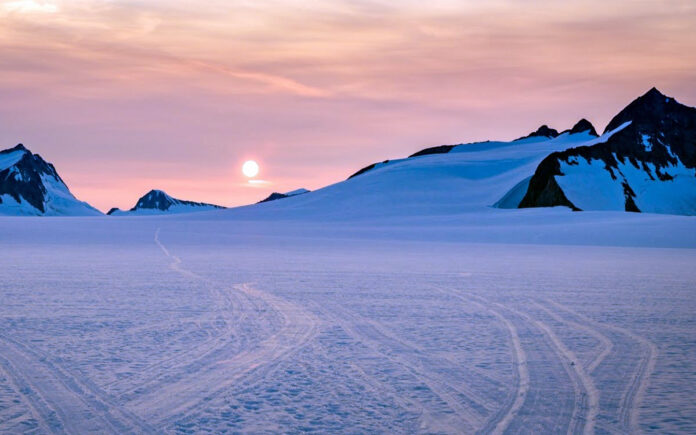London: Glaciers in the Juneau Icefield in southeastern Alaska are melting at an accelerated rate, potentially reaching an irreversible tipping point earlier than previously anticipated, according to a study published on Tuesday.
Researchers from Newcastle University in England discovered that glacier loss in the Juneau Icefield, located just north of Alaska’s capital city of Juneau, has significantly sped up since 2010. This rapid melting poses a serious threat as glacier melt is a significant contributor to rising sea levels, impacting coastal communities globally. The current pace of ice loss could lead to a permanent decline of the Juneau Icefield, experts warn.
“As glacier thinning on the Juneau plateau continues and ice retreats to lower levels and warmer air, the feedback processes this sets in motion is likely to prevent future glacier regrowth,” said Bethan Davies, senior lecturer at Newcastle University and lead author of the study, in a press release.
Published in the journal Nature Communications, the study revealed that the volume of the icefield decreased at twice the rate per year from 2010 to 2020 compared to the period from 1979 to 2010. Historical records dating back to 1770 indicate that the Juneau Icefield has lost nearly a quarter of its original ice volume. However, the study did not specify when the icefield might completely disappear at its current rate of volume loss.
Every glacier mapped within the Juneau Icefield in 2019 had retreated from its 1770 position, with 108 glaciers having vanished entirely.
“Alaskan icefields, which are predominantly flat plateau icefields, are particularly susceptible to accelerated melt as global temperatures rise, affecting a larger surface area,” explained Davies.
Also Read | Meta Reverses Ban on ‘Shaheed’ Term After Oversight Board Review
Scientists have consistently warned about the detrimental impacts of global warming fueled by greenhouse gas emissions from industries, which continue to erode glaciers and ice sheets worldwide, leading to rising sea levels that threaten coastal cities.
Alaska boasts some of the world’s largest icefields, with the Juneau Icefield ranking as the fifth largest in North America, spanning approximately 1,500 square miles—an area comparable to the size of Rhode Island, according to the U.S. Forest Service.
The researchers speculate that similar conditions causing the thinning of the Juneau plateau could affect other icefields across Canada, Greenland, Norway, and other high-Arctic regions.
Current projections suggest that the volume loss of the Juneau Icefield will remain consistent until 2040, with an anticipated acceleration post-2070. However, the researchers indicate that these projections may need adjustment in light of their latest findings.



